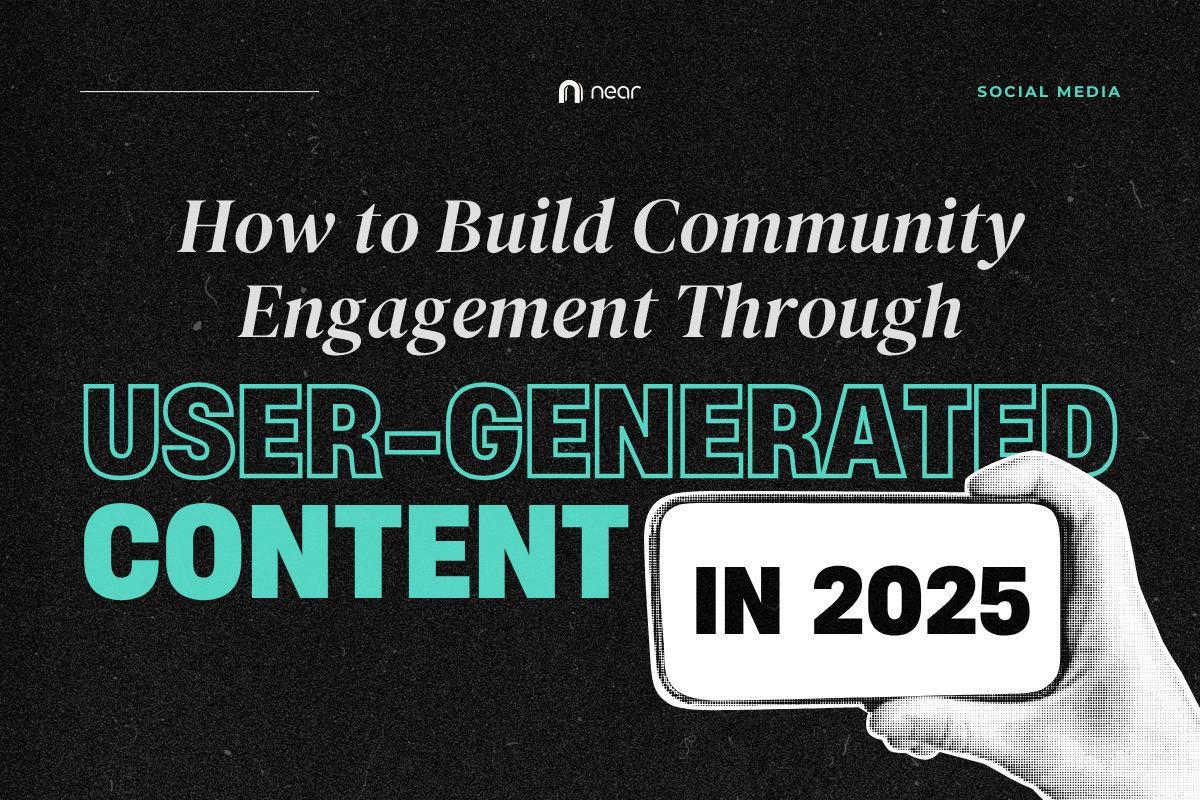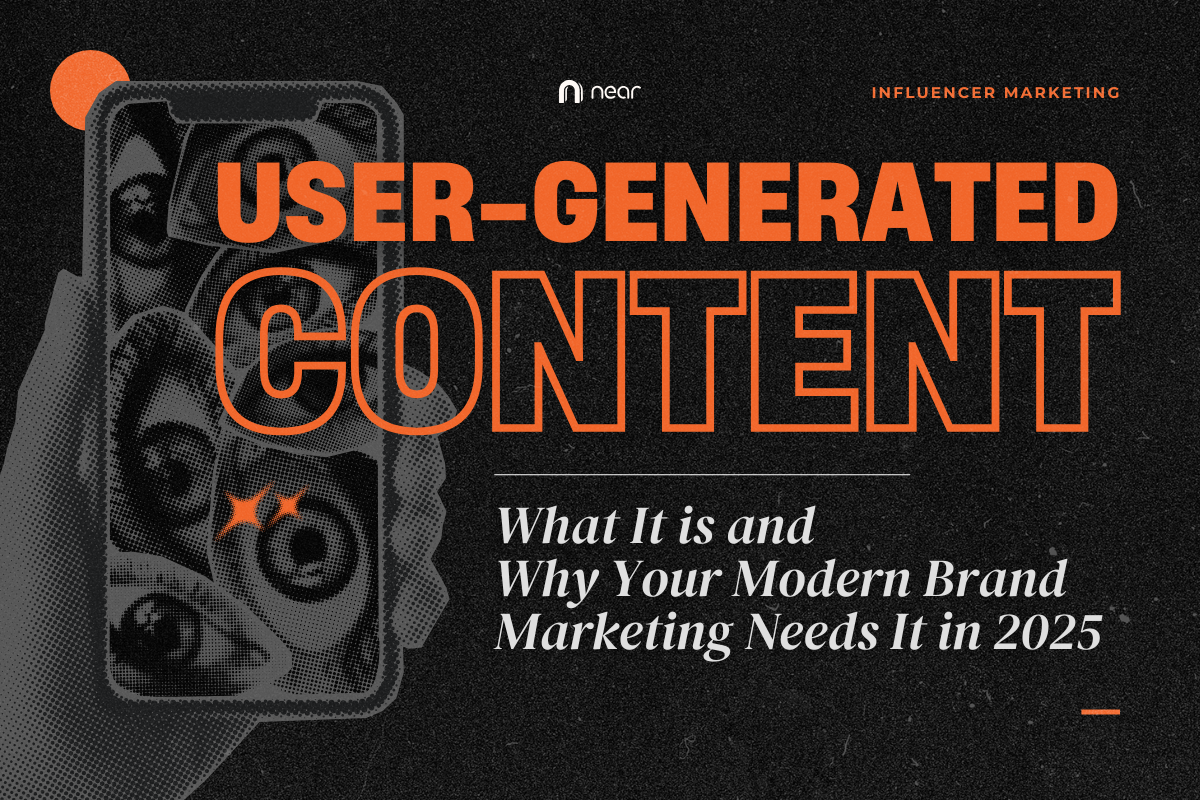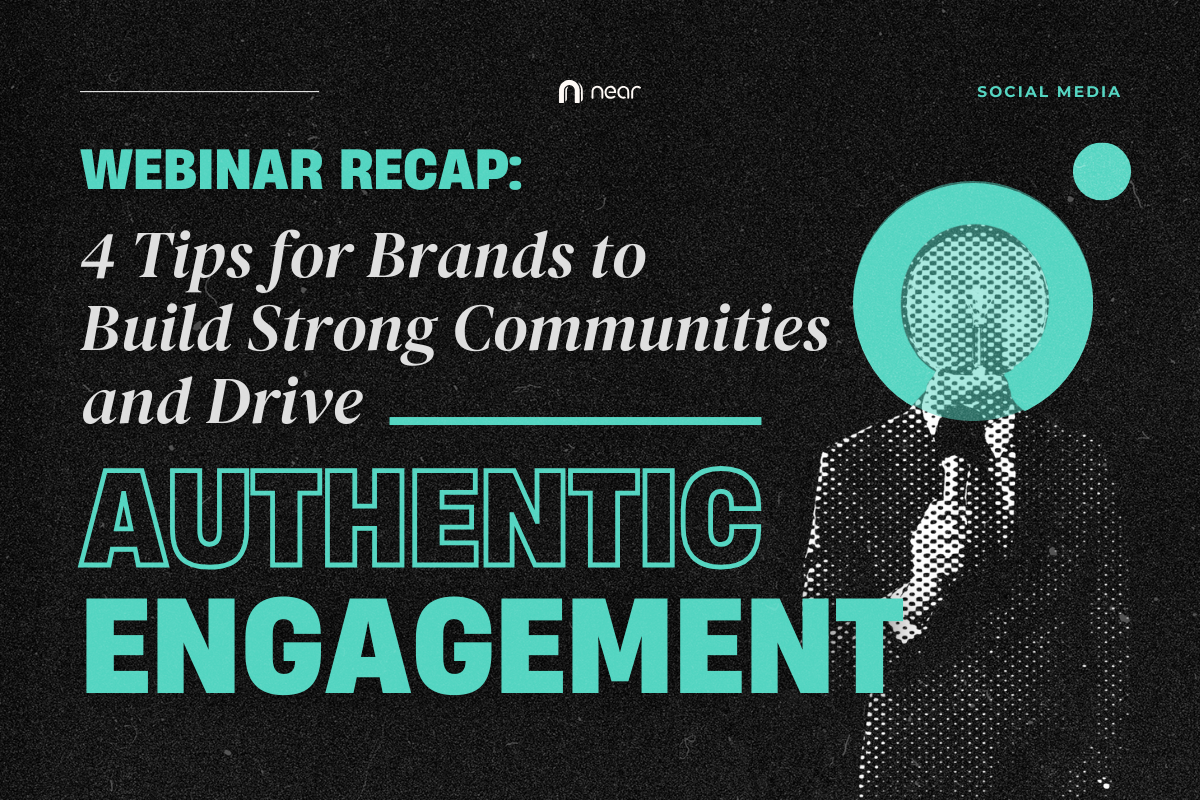View By Date
- December 2025 1
- November 2025 2
- October 2025 3
- September 2025 2
- August 2025 2
- July 2025 2
- June 2025 2
- May 2025 3
- April 2025 2
- March 2025 3
- February 2025 1
- January 2025 1
- November 2024 1
- September 2024 1
- July 2024 1
- May 2024 3
- April 2024 1
- March 2024 1
- February 2024 2
- January 2024 2
- August 2023 1
- July 2023 1
- June 2023 2
- May 2023 3
- April 2023 4
- January 2023 2
- November 2022 1
- September 2022 3
- June 2022 1
- December 2021 1
- November 2021 4
- October 2021 2
- September 2021 1
- January 2021 1
View By Category
How to Build Community Engagement through User-generated Content in 2025
How to Build Community Engagement through User-generated Content in 2025
In 2025, there are only two ways that a brand is interacting with user-generated content (UGC): either they are leveraging it to build their brand presence or completely missing out on its benefits.
And every marketer knows that missing out on what is relevant is a step towards failing with your marketing strategy. No one wants that. We all want to create marketing campaigns that meet our KPIs, if not completely exceed them! Now, how can we do that on social media this year? Community engagement through UGC.
Here’s how to properly make use of UGC to build and engage an online community:
1. Bring in a sense of belonging.
A community is a space in which people know they belong. That means your brand should encourage interaction and connection for a real, vibrant community to thrive on social media, which you can accomplish through UGC.
Why UGC? Although influencer marketing has its unique place in your marketing strategies, trust is not built with an army of flashy KOL content alone.
It can be as simple as resharing an Instagram story a happy customer tagged you in, or keeping a highlight on your page dedicated to customers talking about their experiences. Acknowledge posts through likes, comments, and community spotlights on your pages so they know their trust in your brand matters.
If you need a reference, many beauty brands today do this! One example is about-face by Halsey. The brand’s Instagram Stories are riddled with makeup looks and tutorials by avid users. In addition to that, they also have carousel posts of “muses” using their latest products:
https://www.instagram.com/p/DJVKzZRxhS-/
2. Initiate avenues for interaction.
You can’t just wait for customers to make content about your brand before you take advantage of UGC. Start now by initiating a campaign that invites people to make content about your brand and share it.
For example, one of the ways Spotify Philippines promoted 2024 Wrapped was through its Branded Mission, a TikTok challenge that let users make a year-end recap video through a CapCut template the brand provided.
This gave Spotify users a chance to show off the highlights of their 2024, along with their 2024 Wrapped results, without having to do much editing. Personalization can encourage more interaction!
https://www.tiktok.com/@ckdeleon_/video/7444920087485746450
https://www.tiktok.com/@frnzchuaa/video/7444844382852844807
https://www.tiktok.com/@maybedrei/video/7445160150555462919
3. Tell your brand story through people.
It gets hard to constantly come up with creative content that reflects your brand story. With UGC, you don’t have to rely on your content plan alone to engage consumers.
Each user offers a different voice and perspective about your product, so let these differences make your content more dynamic and approachable.
https://www.tiktok.com/@dyson_ph/video/7495735012726230327
Dyson is known as a high-tech brand of hair and floor care products, but this UGC post communicates its unmatched tech by making it fun and relatable: a challenge that compares the speed of wet-to-dry straightening to a quick makeup routine.
Real-life uses, testimonials, and reviews are just some ways your brand can incorporate UGC in its storytelling. Let customers enrich your brand story through their words and experiences, and you can build an engaged community on mutual trust and appreciation.
Let UGC breathe life into your marketing strategy
UGC lets your marketing campaigns be more grounded, as they make your brand more accessible to its customers. Remember to foster a sense of belonging between customers, create opportunities for customers to interact with your brand, and to give them room on your social pages to tell your story on your behalf.
Want to make marketing campaigns that make a difference? Download our social media trends guide here.
User-generated Content: What It is and Why Your Modern Brand Marketing Needs It in 2025
User-generated Content: What It is and Why Your Modern Brand Marketing Needs It in 2025
The difficult but also exciting thing about brand marketing today is that brands have to constantly find novel and interesting ways to promote their products.
One aspect of a great marketing strategy that many tend to overlook even in 2025 is producing user-generated content, or UGC, which offers amazing opportunities for a brand to really carve out its own space in a saturated social media space.
If UGC still isn’t a consideration for your marketing campaigns today, read on and let us tell you why you need it. But before that, let’s get into the difference between UGC and influencer content.
What's the difference between UGC and influencer content?
Both are great ways to promote your brand, but the two are very different.
An influencer or key opinion leader creates content for a brand and promotes it on their various social media platforms. They have an established online following and community, often casting a wide net as they market products through their posts, which are typically in the form of photos and videos.
UGC creators, on the other hand, are everyday people who also make content to promote brands and their products. Brands can also gain full rights to the photos and videos they create, which they can then distribute across their own social platforms instead of the creator’s.
3 reasons why you shouldn’t skip UGC in your 2025 marketing strategy
1. To boost brand presence
UGC can expand the visibility of your brand on social media platforms because the format – usually bite-sized videos posted on platforms like TikTok, Instagram, and Facebook – lends itself to more unique and creative content that can match content styles popular on each platform.
According to HootSuite, “Video content is becoming increasingly effective with Facebook users, leading to higher engagement than posts using photos or graphics.”
UGC gives your brand room to play around and find ways to promote your brand story that goes beyond a typical explainer post. Nobody wants to interact with an “about us” page slapped onto a social media static, right?
Tip-Top Chicken is a brand that encourages UGC creators to make wacky content, which results in great outputs like this:
https://www.tiktok.com/@tiptopchickenph/video/7470892915666029829
When done well, UGC can be more engaging and thus more shareable because content featuring real people is just more interesting than perfectly polished ads in this era of social media.
2. To build social proof
In Near Creative’s recent webinar entitled “Winning Strategies: Social Media Engagements to Conversions,” our senior brand manager Viktor Kapunan discussed why social proof is an essential for social commerce.
Viktor shares, “The more validation potential buyers see, the more likely they are to purchase from your brand. You have to leverage social proof to build credibility and stand out from competitors and to turn engagement into actual sales.”
Great testimonials can even be simple demo videos like this from Dyson Philippines:
https://www.tiktok.com/@dyson_ph/video/7468655056816999686
When you have a variety of real people showcasing their positive personal experiences with your product, it makes you more trustworthy in consumers’ eyes because it strengthens your claims and gives your brand more credibility.
3. To address customer concerns
Every discerning consumer has valid questions about a product before they buy it. Posting a FAQ carousel on your social channels are a quick and straightforward way to address these, but they may not be the most engaging.
UGC offers your brand a more creative and visual means of answering these questions. Take this example from Wellspring, a local brand of yummy gummy supplements. The brand used a man-on-street interview to show people why their Ashwagandha gummies are great for stress relief without explicitly saying it.
https://www.tiktok.com/@wellspringph/video/7486852909506858245
Influencer content and UGC for a balanced marketing strategy
The role of influencers and UGC creators are two distinct but important parts of an airtight marketing strategy. A good mix of these can lead consumers to get to know your product well enough to eventually make a purchase. But just remember that UGC is meant to boost brand presence, build social proof, and address customer concerns.
Want to learn about making campaigns that work in 2025? Download our social media trends guide here.
Webinar Recap: 4 Tips for Brands to Build Strong Communities and Drive Authentic Engagement
We don’t interact with brands like we used to. Back then, marketing and advertising were heavily reliant on the huge following of celebrities to put more eyes on a brand. Today, however, we are seeing a greater focus on community and authenticity through intentional content creation.
Follower counts and impressions no longer paint an accurate picture of a campaign’s success. Now, engagement helps us understand if consumers gave more than a passing glance at a product. This noticeable shift from aspirational content into community-driven influence is why, as mentioned in our previous blog, micro-influencers are growing in prominence on social media.
Near Creative held our recent webinar entitled, “Level Up Your Brand Strategy: The Power of Community-Driven Influence” this February, with content creator (also midnight snacker and professional yapper) Alonzo “Cru” Cruel as our special guest. Here are our 4 key points to help you harness the power of community-driven influence:
4 Ways for Brands to Create Engaged Online Communities
1. Know your brand's value.
Every brand has a unique flavor. If your brand feels like it doesn’t have one, then it’s time to go back to basics and discover who your brand is.
On this, Cru suggests, “You need to understand your product and who exactly will benefit from your product.” These are great starting points in developing your brand identity because a clear and solid brand identity is the foundation for the community you will be building. After all, if you don’t have an identity, how will you discover who your audience is?
2. Foster authentic and relatable content.
Today, consumers are partial to brands that feel real—that is, brands with distinct personalities. So when you build your brand identity, the next step is to further flesh it out through content that tells people who your brand is in a way that only it can.
This also means daring to think outside the box with content that is original, but still rooted in a cultural reality that your audience will understand at its core. Think RC Cola’s viral 2020 ad. It was bizarre, but the humor was so Filipino that it clicked!
https://youtu.be/hXWj5BK7evM?feature=shared (embed)
3. Empower user-generated content.
Viktor Kapunan, senior brand manager at Near, says, “Your audience is your best advocate.”
In this era of personalization and community, audiences are just as interested in seeing content made by other “normal” people—that is, user-generated content (UGC). Brands can take cues from the likes of Cebu Pacific and how they share real travel moments through the hashtag #JuanForFun. This approach makes travel feel accessible to viewers because they are able to see themselves in the content and therefore find a personal connection with it.
4. Leverage storytelling to create emotional connections.
“People nowadays don’t just buy products; they buy into stories,” shares Viktor. Sure, people still take a look at popular brands endorsed by the hottest celebrities, but that’s hardly ever enough anymore to get people to truly care about what you’re selling. The people want a good story that reels them in and makes them feel something.
Jollibee is a great example of this. The brand has plenty of “Kwentong Jollibee” videos that showcase their expertise in storytelling. Jollibee’s videos blend strong narratives with Filipino culture and values that are emotionally affecting and inspiring for audiences.
https://youtu.be/2Gcx-QT9k0s?feature=shared (embed)
Bonus: partner with content creators who match your brand’s vibe.
Sometimes, although brands understand that they need to build a unique identity and reinforce it through UGC and great storytelling, they still make the mistake of just choosing the most well-known influencers to promote their brand without first considering who the influencer’s audience is and their style of content.
Cru has this to say, “You have to know [that a] creator is going to be someone who effectively communicates to the people you want to communicate with.” He adds, “Know exactly who these creators are entertaining. If your product aligns with those people, then go for [that content creator].”
Master the marketing trends of 2025. Watch a replay of our webinar here and download our trends guide here!





